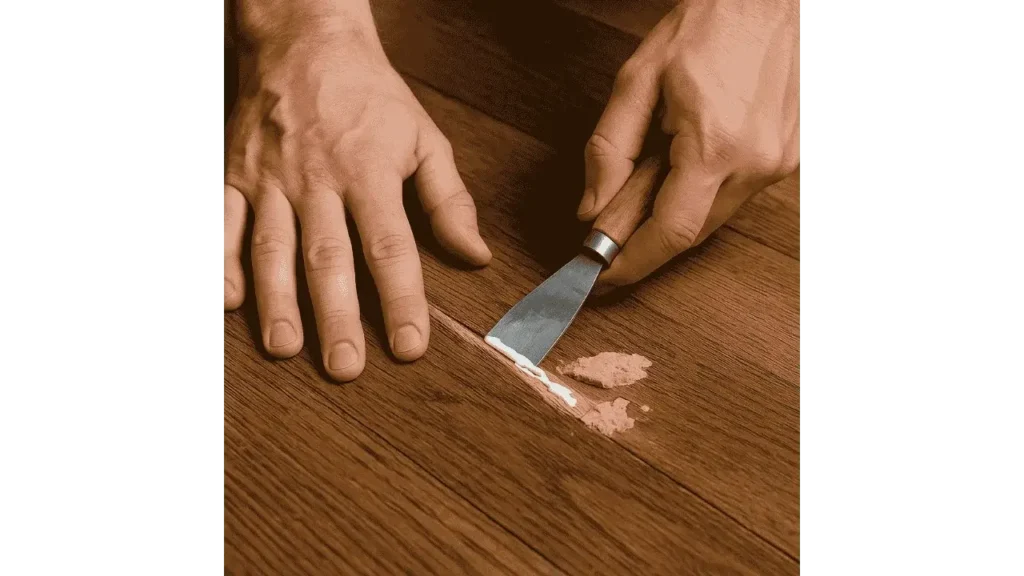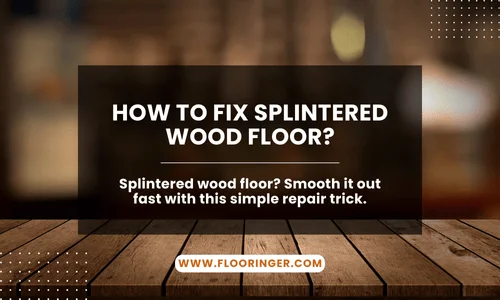Hardwood floors can develop splinters over time due to wear and tear, heavy furniture movement, or improper maintenance. Repairing splintered wood floors properly helps restore their appearance and ensures they remain safe to walk on without causing discomfort or injury.

Step 1: Avoid Pulling up the Splinter
When you notice a splinter, it may be tempting to pull it up immediately. However, pulling it forcefully can cause further damage to the surrounding wood. Instead, assess the splinter and determine the best way to secure it back in place without worsening the issue by carefully examining the area.
Why shouldn’t you pull up a splinter in hardwood floors?
Removing a splinter incorrectly can create a larger hole or crack in the wood, leading to more extensive repairs that could have been avoided with a gentler approach.
Step 2: Remove Dirt and Debris
Before making any repairs, it’s important to clean the affected area thoroughly. Use a soft brush or a vacuum cleaner to remove any dust, dirt, or debris that could interfere with the repair process. A clean surface ensures that glue and fillers adhere properly without obstruction.
What is the best way to clean a splintered hardwood floor?
Using a soft cloth or vacuum with a brush attachment can effectively remove dirt without causing additional damage, helping to prepare the surface for repair.
Learn More: Removing Waffle Marks from Wood Floor
Step 3: Glue the Splinter
Once the area is clean, carefully apply wood glue underneath the splinter. Use a small brush or toothpick to spread the glue evenly, ensuring the splinter is securely bonded back to the floor. Press down gently and hold it in place until the glue sets completely.
What type of glue should be used for fixing hardwood floor splinters?
Wood glue specifically designed for flooring repairs works best, as it provides a strong bond without affecting the floor’s finish or natural appearance.
Step 4: Fill Holes Left by a Broken Splinter
If the splinter has broken off completely, fill the remaining hole with wood filler that matches the floor’s color. Smooth the filler with a putty knife and allow it to dry completely before sanding it down to blend with the surrounding wood surface.
Can wood filler be stained to match hardwood floors?
Yes, many wood fillers are stainable, allowing them to blend seamlessly with the existing floor finish, ensuring the repair is hardly noticeable.
Read More: How to Tell If Wood Floors Are Sealed?
Conclusion:
Repairing splintered wood floors requires patience and the right materials to achieve a seamless finish. By following these steps, cleaning the area, using quality glue, and filling any gaps, you can restore the beauty and safety of your hardwood floors. Regular maintenance, careful use, and timely repairs will help prevent future splintering and prolong the life of your flooring.
